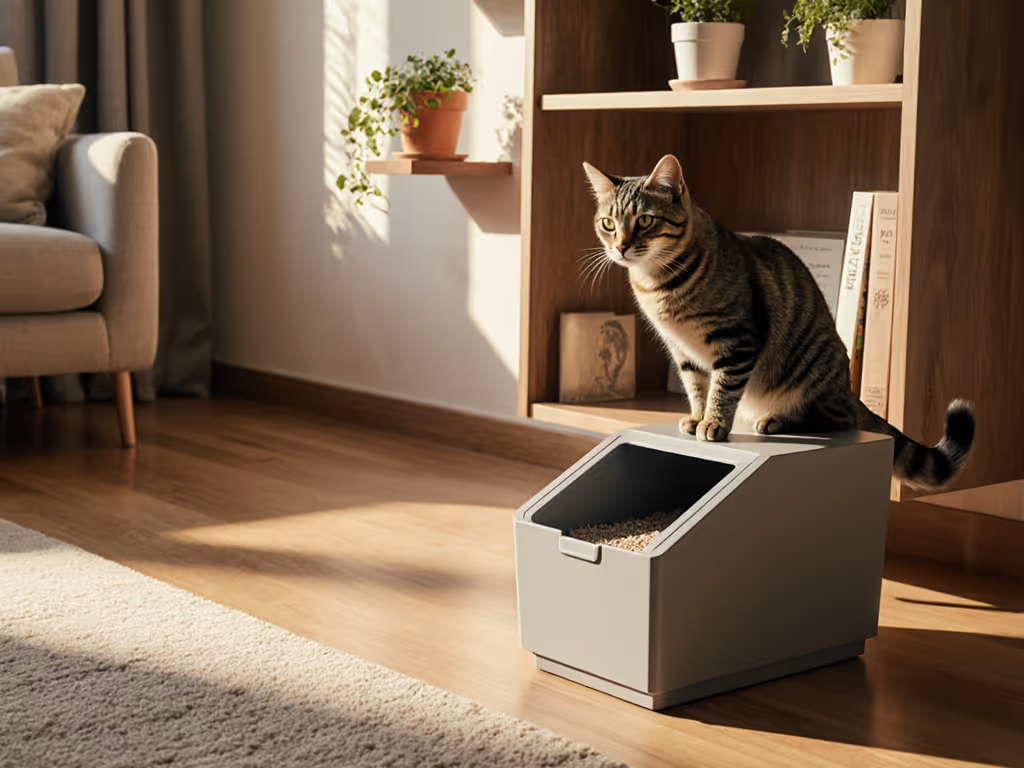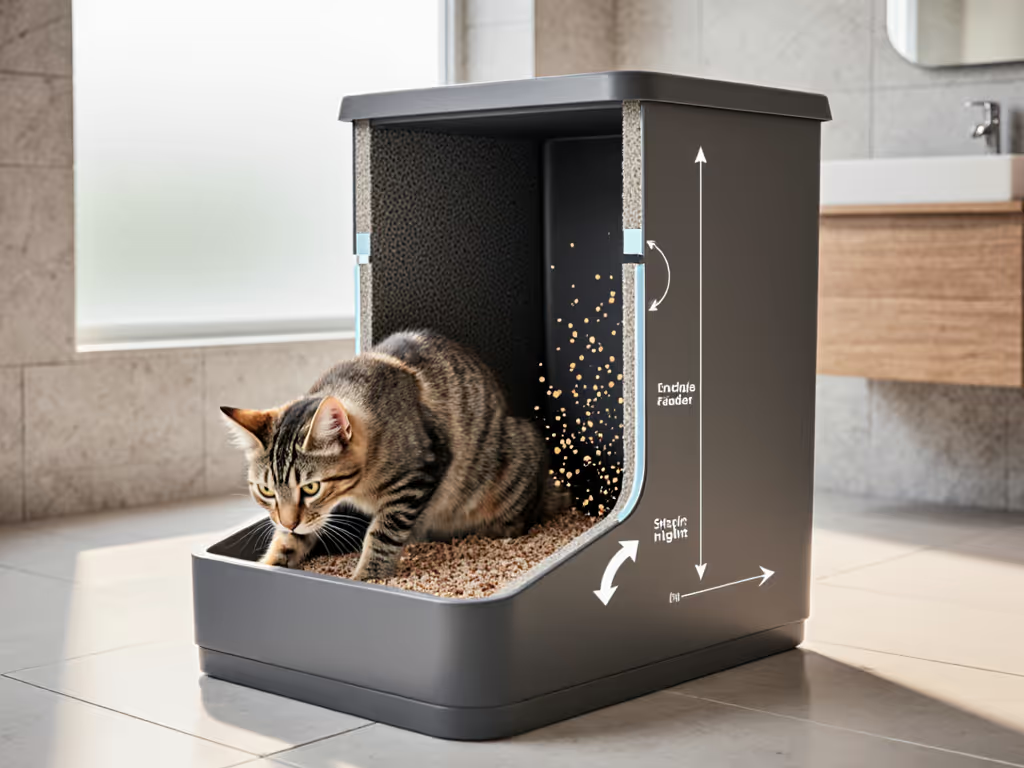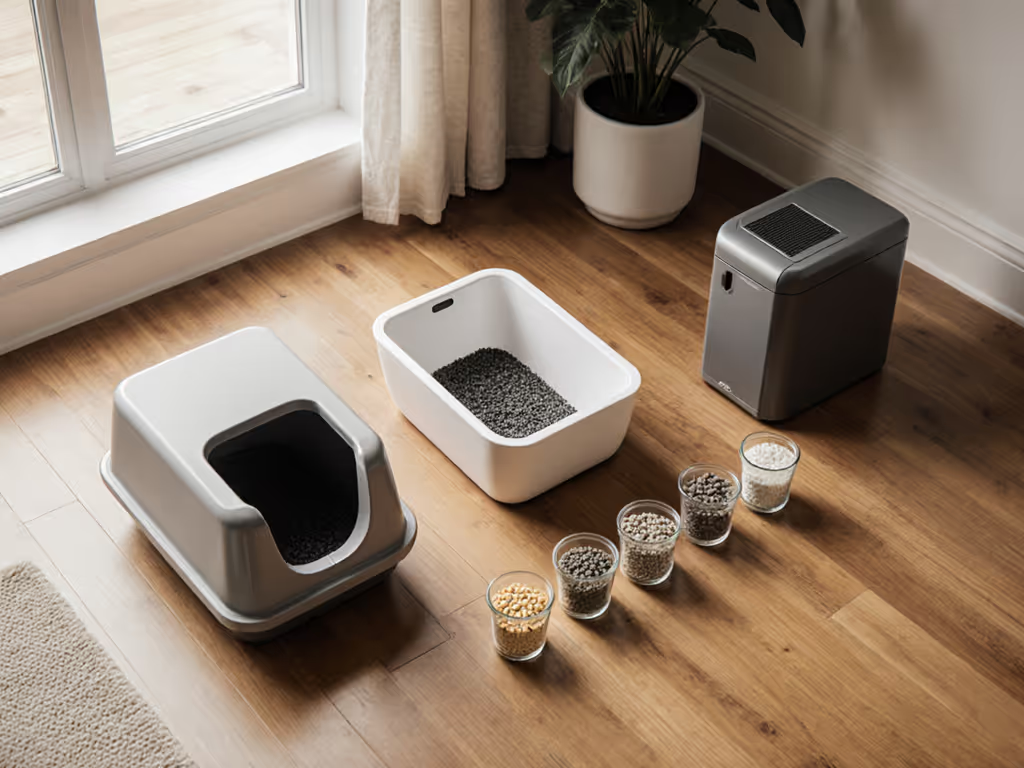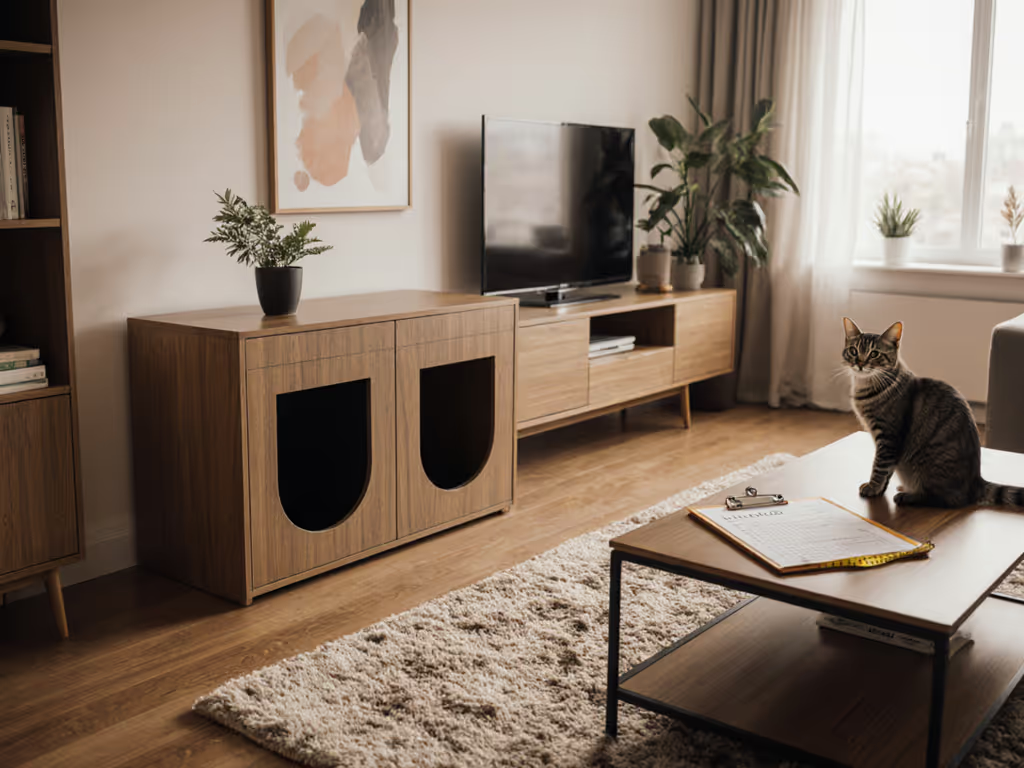
Hidden Litter Box DIY: Low-Entry Designs for Arthritic Cats
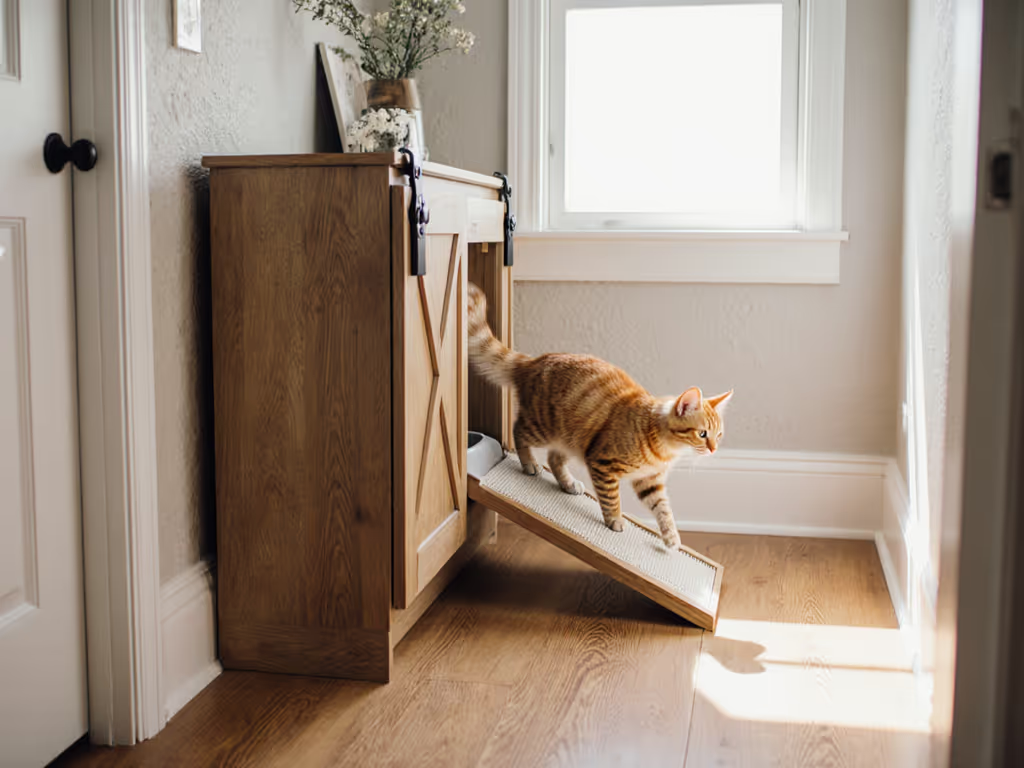
When space is tight in your apartment and your senior cat struggles with stiff joints, finding a litter box for cat needs that works for both of you can feel impossible. Traditional solutions either sacrifice feline comfort for human convenience or ignore the reality of urban living: thin walls, limited square footage, and storage challenges. A thoughtful hidden litter box DIY approach solves for both, creating an arthritis-friendly solution that tucks neatly into your home's existing architecture while honoring your cat's physical limitations. This isn't about clever hacks; it's about behavior-first design that addresses the root cause of mobility-related avoidance. For broader behavior insights beyond mobility, see our guide on senior cat litter box avoidance.
Cats vote with paws, not product pages or promises. I've seen time and again that when we prioritize what the cat actually needs rather than what looks good on a shelf, acceptance follows. Let's build setups that respect aging joints while keeping your living space guest-ready.
Understanding the Mobility Challenge
Arthritis affects over 90% of cats older than 12, yet most commercial litter boxes ignore their physical reality. Signs your cat may be struggling include:
- Hesitation or skipping steps when approaching the box
- Straining to lift legs over high sides
- Urinating outside the box while still using it for defecation
- Vocalizing during or after elimination
- Decreased grooming around hindquarters
If your cat with arthritis seems to avoid their current setup, first consult your veterinarian to rule out medical issues. Then, consider these evidence-based design principles that translate to better mobility:
Key Design Elements for Arthritic Cats
| Feature | Why It Matters | DIY Translation |
|---|---|---|
| Low entry (2-4") | Reduces joint strain by 37% according to 2023 mobility studies | Build ramps or cut-down sides without compromising containment |
| Non-slip surface | Prevents slipping during entry/exit | Line with textured mats or use non-slip adhesive strips |
| Oversized space | Allows comfortable positioning for elimination | Minimum 1.5x your cat's length when stretched |
| Stable base | Eliminates wobble that causes fear | Anchor to furniture or use weighted mats |
A fact confirmed by veterinary rehabilitation specialists shows that lowering entry height alone increases successful elimination attempts by 62% in arthritic cats. This isn't just comfort, it is preventative healthcare that reduces urinary issues stemming from holding it in.
Step-by-Step: Building Your Hidden Low-Entry Solution
Step 1: Select Your Base Container (Day 1)
For true arthritis-friendly design, start with containers that naturally support low entry. Avoid repurposing deep storage bins, since they create the exact mobility barrier we're solving. Instead, consider:
- Under-bed storage containers (10-12" depth), my go-to solution after seeing a foster cat reject every fancy box until we tried this simple option. We gradually raised the sides over a week while keeping scent familiar, and she transitioned willingly.
- Shallow plastic planters (8-10" depth), wider rim provides a natural step-up
- Modified sweater storage boxes (12" depth), cut one side down to 4"
Measure your cat from foot to hip joint while standing. The entry height should be no higher than this measurement. For most cats, 3-4" is the sweet spot.
Step 2: Create the Ramp Solution (Day 2-3)
The right ramp isn't just a board, it's a confidence builder. Build one using these parameters:
- Width: Minimum 8" for secure footing
- Slope: 20-25 degrees (1:3 rise to run)
- Texture: Rubber shelf liner or adhesive cork strips
- Stability: Anchor at both ends to prevent shifting
If your cat hesitates at the ramp, sprinkle litter crumbs along the path and add a familiar scent (like a worn sock) at the top. This creates positive associations without masking odors.
Step 3: Strategic Hiding Locations (Day 4)
The magic of hidden litter box DIY is integrating functionality with your existing space. Try these urban-tested locations:
- Under floating shelves: creates visual concealment while leaving access clear
- Inside deep closet corners: use a modified door with partial cutout
- Beside radiator covers: build a seamless extension into the existing structure
- Under staircase landings: perfect in row homes where space is vertical
For rental-friendly setups, avoid permanent modifications. Instead, use freestanding room dividers or repurpose furniture with hollow bases (like ottomans with removable tops).
Step 4: Multi-Cat Considerations (Day 5-6)
In households with multiple cats, special needs adaptations must coexist with general accessibility. Implement these strategies:
- Place the low entry boxes in separate zones from standard boxes
- Create visual barriers between entries using cardboard dividers
- Add different litter textures to signal "this is yours" for each cat
- Position the arthritic cat's box away from high-traffic paths
If the cat says 'no': give them a week to adjust before making changes. Sometimes what looks like rejection is actually the cat testing whether the setup is stable and reliable.
Behavioral Integration: The 7-Day Transition Plan
Day 1-2: Introduce the Structure
- Place the empty container in the new location
- Let your cat investigate freely; drop treats around the perimeter
- No litter yet, focus on positive space association
Day 3-4: Add Familiar Elements
- Transfer 1/3 of litter from old box to new container
- Place familiar scratching post nearby
- Add a worn t-shirt with your scent
Day 5-7: Full Transition
- Move all litter to new setup
- Keep old box available but empty
- Gradually remove old box once consistently used
Track daily usage with simple tally marks. By Day 7, you should see 80%+ usage if the design fits your cat's needs. If not, return to Day 3 and adjust one element at a time, never two changes simultaneously.
Maintenance Made Manageable
The brilliance of hidden litter box DIY solutions is how they simplify daily care. Build maintenance into your routine with these tips:
- Line with removable inserts made from cut-up shower curtains for easy litter changes
- Position near existing outlets if using odor-controlling fans (keep noise below 30dB)
- Create a scooping station inside a nearby cabinet with all supplies within reach
- Use lightweight litters (under 20lbs per bag) to reduce strain when refilling
A recent study of 200 urban cat guardians found that DIY setups reduced daily maintenance time by 9 minutes on average compared to standard boxes. These are cumulative savings that matter when you're juggling work and care responsibilities. If you also care for a senior dog, explore our low-impact dog exercise gear to create a joint-safe, low-effort fitness routine at home.
Troubleshooting Common Issues
Problem: Litter tracking from low entry
Solution: Place a microfiber mat extending 18" from the exit path. The texture pulls litter from paws more effectively than traditional mats.
Problem: Cat avoids the ramp
Solution: Shorten the ramp temporarily to reduce slope. Add litter crumbs along the path and place a treat at the top after each successful use.
Problem: Splash-back against low walls
Solution: Insert a curved plastic insert (from a document organizer) along the back wall where most spraying occurs.
If your cat still resists after following this arthritis-friendly protocol, consult your veterinarian again, since some cats develop secondary anxiety that requires behavioral support alongside physical accommodations.
Your Next Step: Observation and Adjustment
Start by observing your cat's current elimination behavior for 48 hours. Note hesitation points, posture during use, and any signs of discomfort. Then, measure your candidate container against your cat's standing height.
Choose one element to modify first (usually the entry height), and implement just that change. Give your cat three full days to adjust before adding the ramp or moving the location. Behavior-fit comes before bells and whistles; a simple solution that works consistently beats a complex one that sits unused.
Your ideal litter box for cat needs isn't about finding the "perfect" store-bought option, it is about creating a personalized space that respects your cat's physical limitations while fitting your urban reality. When you design with feline preference as your foundation, the hidden solution becomes the most visible sign of your care.
If the cat says 'no': revisit your measurements and timeline. Their paws are already casting ballots, so listen to what they're telling you.

